Introduction: NATO’s fulcrum in the Aegean
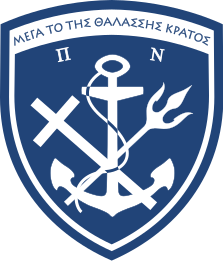 Greece, the Hellenic Fleet took an important part of the defense of the eastern Mediterranean, even growing in the 1970s as the Soviet black sea fleet frequently made trips in the Mediterranean and red sea. At its peak in 1960, there were no less than two Cruisers, the Helle (ex-Eugenio di Savoia) and the old Averof acting as flagship, eight destroyers, 12 ASW Frigates (Hunt & Flower), a sub-chaser, 32 minesweepers (BYMS/MMs type), 20 patrol crafts (ML/HDML types), three LSTs and two submarines, all from WW2. But the internal situation was quite tense and almost unmanageable until 1949. Indeed, after a brutal occupation by the Germans until 1945, the communists tried a takeover and a civil war raged from 1947 and until 1949, leaving the country at edge, devastated, and impoverished. The prewar fleet had been sunk or captured, and the fleet has been entirely re-equipped by the allies, on loan, mostly by the British as the Hellenic navy fought well under supervision of the Royal Navy. This navy could not do much during the civil war, mostly an inland, mountaineers partisan war. From 1947 the US government took over, and stakes were heigh as the White House, weary of the progresses of the communists in Europe, committed itself to support the government. The navy was gradually re-equipped with US ships. In 1951, this started with two Gleaves class destroyers, and in 1959, four Fletcher class. They were financed under the MDAP. Greece joined NATO in 1952.
Greece, the Hellenic Fleet took an important part of the defense of the eastern Mediterranean, even growing in the 1970s as the Soviet black sea fleet frequently made trips in the Mediterranean and red sea. At its peak in 1960, there were no less than two Cruisers, the Helle (ex-Eugenio di Savoia) and the old Averof acting as flagship, eight destroyers, 12 ASW Frigates (Hunt & Flower), a sub-chaser, 32 minesweepers (BYMS/MMs type), 20 patrol crafts (ML/HDML types), three LSTs and two submarines, all from WW2. But the internal situation was quite tense and almost unmanageable until 1949. Indeed, after a brutal occupation by the Germans until 1945, the communists tried a takeover and a civil war raged from 1947 and until 1949, leaving the country at edge, devastated, and impoverished. The prewar fleet had been sunk or captured, and the fleet has been entirely re-equipped by the allies, on loan, mostly by the British as the Hellenic navy fought well under supervision of the Royal Navy. This navy could not do much during the civil war, mostly an inland, mountaineers partisan war. From 1947 the US government took over, and stakes were heigh as the White House, weary of the progresses of the communists in Europe, committed itself to support the government. The navy was gradually re-equipped with US ships. In 1951, this started with two Gleaves class destroyers, and in 1959, four Fletcher class. They were financed under the MDAP. Greece joined NATO in 1952.
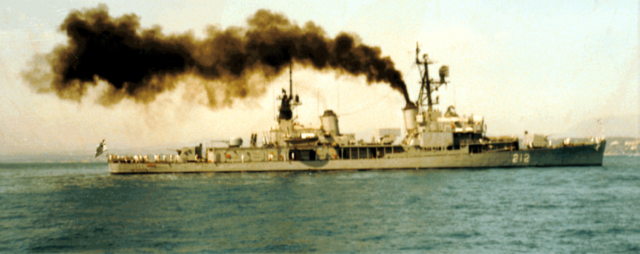
HS Kanaris, lead ship pf the Kanaris class, Gearing FRAM II destroyers in service from the 1970s to the 1990s. The Turkish fleet had the same.
But Greece had a problem with another member of NATO joining the same year: Collaborating with its old natural enemy, Turkey, which fleet was also essential to the defense of the Western Mediterranean. Both fleet never practiced exercises side by side, or even through NATO exercises. They were both equipped the same way with modernized US Ships, which led to friendly fire during the war on Cyprus. The Hellenic fleet was reinforced in the 1960s, 70s and 1980s, when her last destroyers arrived (modernized Fletcher types!). But this fleet was ageing and Greece, now also part of the EU, turned to Europe for its modernization: Germany, France and the Netherlands. Nowadays, its almost a clone of the Bundesmarine, with even more submarines in service than Germany.
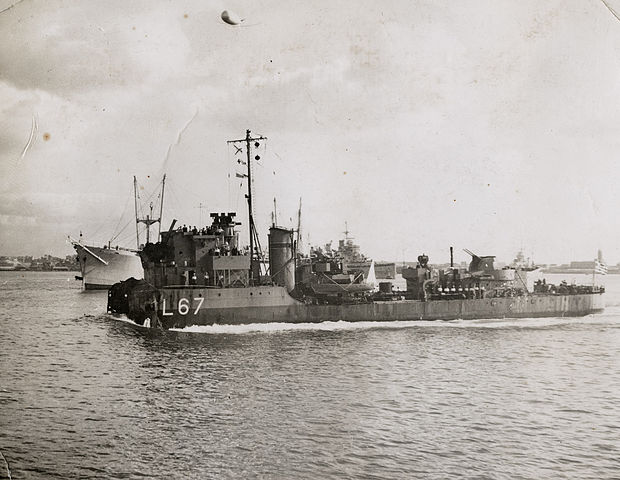
Feats of seamanship: The destroyer escort RHN Adrias (Hunt III class) back to Alexandria after the destruction of her bow in 1943
Situation in 1947: The wartime fleet
New acquisitions of the Hellenic Navy during the war:
Due to numerous recruits as Greeks were fleeing their occupied countries, the Royal Navy provided several destroyers and submarines to the RHN. The most notable Greek destroyer was the Vassilissa Olga, although sunk in Leros on September 23, 1943, and possibly one of the most successful Allied destroyer in the Mediterranean. The RHN Adrias’s prow was blown off Kalymnos in October 1943 by a mine, but she managed to return to Alexandria after a dangerous 400-mile (640 km) trip and summary repairs, quite a feat for any captain. Two Greek destroyers also participated in Operation Overlord.
British transfers:
-The Destroyers Navarinon and Salamis transferred in 1944, returned in 1951 or discarded 1956.
-4 Flower-class Corvettes: Apostolis, Kriezis, Sakhtouris, Tompazis, lent from 1943, discarded in 1961.
-5 Algerine class corvettes (1947)
-6 Submarines: Amfitriti, Xifias, Pipinos, Argonaftis, Delfin, Triaina of the U and V class (lent 1945), discarded 1952-59
-12 BTMS (ASW crafts, US-built, ex-British) of the MMS Tinos class. Discarded in the 1960s.
-The Sub-chaser Vasilefs Giorgios II (ex. PC622)
-32 Minesweepers (BYMS/MMS), in 1945-47 and discarded in the 1960s.
-6 Ex-US PGM9 Patrol vessels (1947)
-2 MMC class minesweepers (1953)
-4 LSTs Khios, Lemnos, Lesvos, and Samos in 1944 (ex. LST-35-33, 36, 37). The latter were still extant in the 1980s (one purchased back by the US Navy for preservation).
-6 LST(3) in 1947, discarded 1964-69, 12 LCT(4) 1946, discarded prior to 1968
It should be added that Greek crewmen also served in a large array of small British auxiliaries, drifters, trawlers and whalers converted as ASW and patrol vessels. All returned to their civilian duties after 1945.
The 1950-60s: NATO’s Hellenic fleet
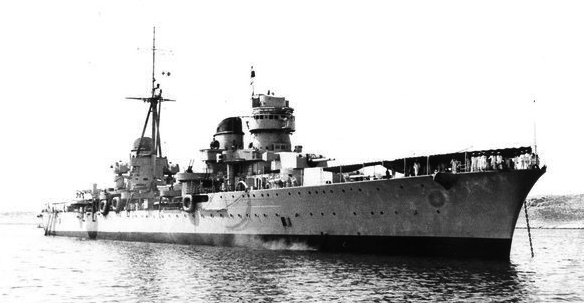
The Greek Cruiser Elli, the ex-Duca D’Aosta obtained in 1951 as war reparation from Italy. It was specified it came in compensation for the Helle, sunk by an Italian submarine in 1940. The Elli was used as flagship. She made sense in the 1950s with a fleet largely made of conventional WW2 destroyers. But at the time, this was the largest vessel Greece ever had, and she drained a lot of technicians, manpower and maintenance for little service so her role as flagship ended in 1964. In her place, the old Giorgios Averoff, now retired, retook its role as flagship she still hold today. The Elli received no significant modernization, but a radar, installed at the end of a sturdier lattice mast aft of the tower bridge. Modernization as an AA cruiser was shortly considered but dropped due to cost issues.
After the Hellenic Navy was significantly strengthened by the leasing of British ships, its organisation was changed to match modern naval doctrines pursued after its entrance into NATO in 1952. US military aid formed the basis of of the country’s armed forces, for aviations, tanks and army equipments at large, but its also deeply changed the face of the the Royal Hellenic Navy, receiving a new set of Fletcher-class destroyers, withdrawing the older British destroyers. The 1960s only saw a reinforcement of the tendency, always helped by the MDAP program.
There is an aspects which is not obvious for an external observer of NATO: Since its independence, Greece maintains a healthy antagonism towards Turkey, and even after 1952, constant quarrels about some Aegean islands and off the Turkish mainland, compounded by the economical crisis. Since the 1970s, the bottom of these seas are rich with petrol and minerals. Greece revendicated an EEZ going straight to the islands off the coast of Turkey; which seemed disproportionate compared to actual size of the Turkish landmass, but conform with the area calculated from a myriad of islands; This makes the Greek EEZ one of the most important in the world, effectively out of proportions in that case with the needs of Turkey.
The second main problem in this rivalry was of course Cyprus. It is linked the complicated past of the Island, under British protectorate since WW2. The EOKA struggle for independence was supported by Greece, which favoured Enosis or the union with the rest of Greece, but the large eastern population was supported by Turkey. This eventually boiled over after the proclamation of the republic of Cyprus in 1960 and the two sides claiming for a better political representation. This degenerated in a “soft” civil war, which only grew in intensity until the UN intervened and separated by force the two parties. Turkey however invaded Cyprus in 1974 and the distance meant the Greek were never able to dispatch troops in time. The Hellenic navy was sent here, however, while NATO barred Greece for any intervention, which in turn, made Greece leave NATO entirely. That was indeed the only time two NATO countries were openly at war with each others. The political situation previously was tense also with the military regime of the “colonels”, supported by the US, to contain communism and socialism in the country. Greece will maintain many ties with NATO however, and eventually came back as full member in 1981.
The fleet’s composition reflected the nature of the restricted waters around the Aegean islands, with a fleet of MTBs, FACs and landing crafts and ships, more important than Turkey. The great problematic of the Navy in 1980 was a difficult financial situation, which made impossible de development of a local shipbuilding industry, and only the Chios class landing ships were built locally, at Eleusis SY in the late 1980s to early 1990s. The large variety of naval assets, from different countries, did not facilitated maintenance as well. The most ambitious program of the late 1980s had been an attempt to built Greek copy of the NATO standard Frigate (Dutch Kortenaer type). The admiralty would have to wait until the end of the cold war to purchase second-hand destroyers and frigates now surplus and pending disarmament and scrapping. Another aspect is still the dependency in the 1990s of Greece towards the US, leasing the base of Suday Bay in Creek to the US Navy, an agreement signed in 1991.
1950-60s MDAP Acquisitions:
The Hellenic navy took a definitive USN savour when re-equipped by the USA:
-Two Gleaves class destroyers, four Fletcher class in 1951.
-Six fletcher class: Four in 1959, Two 1962, all modernized.
-3 ex-GATO class: Amfiriti and Poseidon, transferred in 1957-58, one more in 1965 (Triaina), stricken 1972-82
-6 Escort destroyers Adrias, Krite, Miaoulis, Pindos, Kanaris, Themistocles in 1951, all of the Cannon/DET type.
-1 LSD in 1953 (Nafkratoussa)
-6 LSM 1 (1958), 2 LST 511 (1960)
-8 LCU 501 class (1961)
-2 LSSL patrol vessels (1957)
-6 Norwegian Tjeld class MTB (1965)
-1 Brave class, 1 Ferocity class MTB 1957
-5 Silbermöwe class MTBs 1968
-2 Adjutant class minesweepers (1969)
-5 KFK class CPBs (ex-German, 1969)
1970s acquisitions:
The next significant devolution in the early 1970s concerned the coastal force, as Greece was the first country in the Mediterranean to order the missile fast attack craft (FAC) of the Combattante II, a Franco-German design, and the German designed Type 209 submarines, until then only used by the Bundesmarine. US military aid went on with the delivery of FRAM II type destroyers, mich more capable that earlier units. In 1979, the Hellenic Navy also purchased Netherlands two modern Standard-class frigates (Kortenaer), as the Elli class, also bolstering its capabilities. Instead of US second-hand ships, the Hellenic Navy gradually moved towards recent, missile-armed European ships.
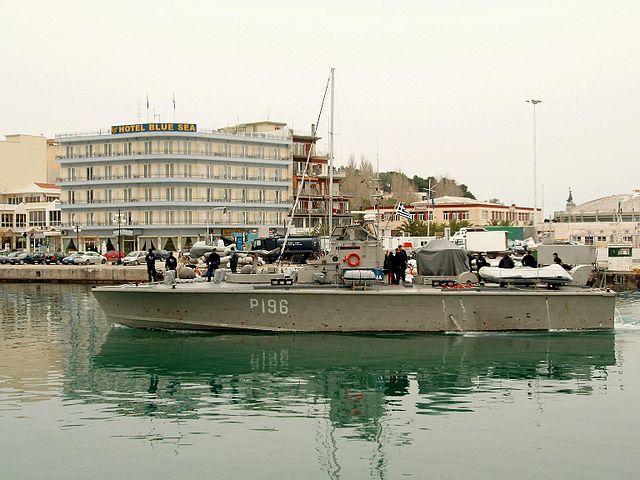
HS Mitilini of the Norwegian Tjeld class in the 1980s, Greek coastal defence rested on around 20 MTBs until the late 1970s.
-The destroyer Miaoulis, of the Allen M. Sumner class in 1971
-Five Kanaris class destroyers (Gearing FRAM class), acquired 1971 to 1977, discarded in the 1990s
-The support ship Aegeon (ex-German Weser, acquired 1976)
-2 Balao/Tench GUPPY IIA and Guppy III respectively (Papamikolis, Katsonis) in 1972-73
-8 Glavkos class submarines (German built) in 1971-80
-1 LSD in 1971 (Nafkratoussa, replacing the former)
-2 Terrebone Parrish class TLS in 1977
-4 La Combattante II class FAC 1971
-7 Jaguar class MTBs 1976
-2 Kelefstis Samos class FAC (1974)
-10 La combattante III class FAC (1976)
-17 Falcon class minesweepers (1976)
-4 Dilos class CPBs (1977)
-4 Goulandris, 4 Panagopulos class CPBs (1975)
The war in Cyprus (1974)
There was a Cypriot navy, distantly supported by Greece, which took a heavy toll in several actions, one, limited, in 1964, and the 1974 war. In 1964 Cyprus clashed with Turkey over militias action. On 6 August 1964, Cyprus National Guard forces attacked the Turkish Cypriot enclave of Kokkina, NW Cyprus. Greece supported this action as a necessary interdiction against a threat by the Turkish Cypriot militia, using Kokkina as a beachhead and supplying its forces from Turkey. The Cyprus National Guard forces (General George Grivas) had the blessing of Athens and made a combined land and sea attack using two Cyprus Navy R-151 Group patrol boats, HS Phaethon and Arion, the latter with Greek navy personnel. They bombarded the enclave in conjunction with land-based 25-pounder artillery. But on 8 August, the Turkish Air Force launched air attack. Phaethon was struck by rocket fire and ran aground near Xeros Harbour. Arion was attacked too and reported struck by strafing fire, but escaped to Paphos while a Turkish F-100 Super Sabre was hit by 40mm AA fire and shot down.
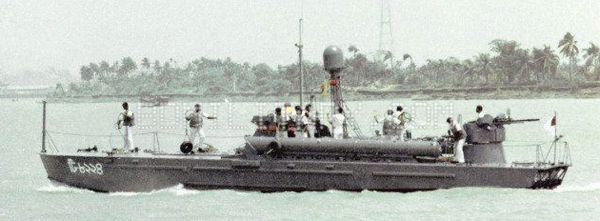
A P-4 MTB (Here, with Bangladesh Navy)
The situation stayed tense in Cyprus in the 1950s even after the Zurich agreements which was tripartite in 1959 (Greec, Turkey, UK). Cyprus had a new constitution and independent state on 16 August 1960 and its defense and internal security was shared and guaranteed by Turkish, Greek and British bases, but arrangements like a Greek president veto-capable Turkish vice-Pdt, still made “ultras” among the greek unhappy with Turkish privileges. However when the colonels junta came into power in Greece, Eneusis (Greek overseas unity) became a priority and in July 1974 there was a brief Greek-backed coup d’état in Cyprus. Turkey claimed under the Treaty its Guarantee to intervene militarily while the legality of the invasion depended on whether common or concerted action between the tripartite was proved impossible. In 1963 the violence escaladed to a new level, with hundreds of dead and wounded in a serie on on-going riots. Villages were attackes and populations displaced. This cumlminated with the 1964 events (see above) fateful for the Cypriot navy. In 1974, the Junta backed AIOKA and the Makarios government fall and the coup d’etat saw officers at the head of it, electing hard-liner Nikos Sampson as the new president. The Turkish demands, necessary to preserve the tripartite arrangements were rejected by UK, compelling the later to intervene.
In 1974 the Cypriots deployed a its First squadron (Boghazi) with T-4, T-5, T-6 MTBs (Soviet origin) and PB sqn with Leventis, Dedalos, Kyrenia (T-1, T-2, T-3), supported by four radar stations (45 nm range) and naval station Famagusta, Xylophagos, Limassol, and Paphos plus an underwater Demolitions Unit at Boghazi naval base. This was a mix of ex-German R-Boats, Yugoslav Type 108s, French PBs (Esterel Fast Patrol Craft (PCF)) and six Soviet P-4 Skinhead (Type 123K) MTBs were certainly its most famous asset. One T108 was probably sunk 14 August 1974 by own crew, and one German R-Boat sunk 14 August 1974 by own crew at Naval Base “Chrysulis” while six P-4 boats were sunk between 20-21 July (the first two trying to oppose the landings) and August 1974 or captured by Turkish forces.
As of 2014, Cyprus has 462 personnel strong for 10 warships including 6 patrol boats and 2 attack craft and 2 speedboats.
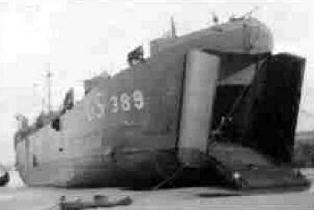 When the Turkish invasion started on the 20th of July 1974 (Operation Attila 1), with a landing at Kyrenia. In total 45,000 men supported by 180 tanks were landed, backed by the Navy and air force. The Hellenic Navy ordered the LST Lesvos sailing off Rhodes to change course and return to Cyprus to disembark its troops under command of Lt Cdr Eleftherios Handrinos the day of the landings. The ship arrived at Paphos and disembarked soldiers from class 103, part of which manned the ship’s AA guns and shelled the Turkish Cypriot forces there for two hours. They surrendered to the Cypriot National Guard. The Hellenic navy was basically too far away to counter-attack rapidly. Cyprus was far close to Turkish coast that of the Aegean. The closest Aegean base still was not equipped with long range ships and there was the problem of two “allies” within NATO clashing over a sovereign territory, Cyprus at the time. UN pressured both sides and quickly resolved to sent troops for interposition. Another problem, and a major one, was visual recoignition, as Turkish aviation soon intervened, and the Turkish fleet had the same origin destroyers as the Hellenic fleet. The Turkish air strike comprising F-100D Super Sabres and F-104G Starfighter equipped with bombs avoided several friendly destroyers with large Turkish flags painted on the ships but mis-identified and sank the Kocatepe, taking a bomb down the funnel. This was the result of a Greek Cyprot deceiption. The Greeks themselves suffered friendly fire when one of their Noratlas transport planes, carrying patatroopers, was shot down by Greek Cypriot AA. A single batallion was sent as a reinforcement, meanwhile a second landing intervened on July 22, notaly bringing tank and Mechanized Companies. In August, UK tried to renew negociations without success, whereas the Greek Junta collapsed. Turkey asked for the federalisation and populations separation. on August 14, to put pressure on negociations was launched Attila 2, landing two more infantry divisions whereas the Greeks constituted the troodos line to bar the southern part of the island on Gonyeli-Nicosia. The war ended with arounc 4,000 vs 6,000 dead on the Turkish and Greek sides respectively.
When the Turkish invasion started on the 20th of July 1974 (Operation Attila 1), with a landing at Kyrenia. In total 45,000 men supported by 180 tanks were landed, backed by the Navy and air force. The Hellenic Navy ordered the LST Lesvos sailing off Rhodes to change course and return to Cyprus to disembark its troops under command of Lt Cdr Eleftherios Handrinos the day of the landings. The ship arrived at Paphos and disembarked soldiers from class 103, part of which manned the ship’s AA guns and shelled the Turkish Cypriot forces there for two hours. They surrendered to the Cypriot National Guard. The Hellenic navy was basically too far away to counter-attack rapidly. Cyprus was far close to Turkish coast that of the Aegean. The closest Aegean base still was not equipped with long range ships and there was the problem of two “allies” within NATO clashing over a sovereign territory, Cyprus at the time. UN pressured both sides and quickly resolved to sent troops for interposition. Another problem, and a major one, was visual recoignition, as Turkish aviation soon intervened, and the Turkish fleet had the same origin destroyers as the Hellenic fleet. The Turkish air strike comprising F-100D Super Sabres and F-104G Starfighter equipped with bombs avoided several friendly destroyers with large Turkish flags painted on the ships but mis-identified and sank the Kocatepe, taking a bomb down the funnel. This was the result of a Greek Cyprot deceiption. The Greeks themselves suffered friendly fire when one of their Noratlas transport planes, carrying patatroopers, was shot down by Greek Cypriot AA. A single batallion was sent as a reinforcement, meanwhile a second landing intervened on July 22, notaly bringing tank and Mechanized Companies. In August, UK tried to renew negociations without success, whereas the Greek Junta collapsed. Turkey asked for the federalisation and populations separation. on August 14, to put pressure on negociations was launched Attila 2, landing two more infantry divisions whereas the Greeks constituted the troodos line to bar the southern part of the island on Gonyeli-Nicosia. The war ended with arounc 4,000 vs 6,000 dead on the Turkish and Greek sides respectively.
1980s acquisitions:
The arrival of the Hydra class, first German-built MEKO 200 HN frigates and two more Standard-class, missile corvettes and Poseidon-class (Type 209) submarines plus modern naval helicopters completely renewed the poential of the Greek Navy, helping retire its classic US composition quite similar to Turkey.
In the 1980s the Navy acquired:
-Two more Kanaris class DDs (1980-81), discarded in the late 1990s
-Five Chios class TLS (1988) in construction, completed 1990s
-2 Asheville class FAC (1989), comp. 1990
1990s acquisitions:
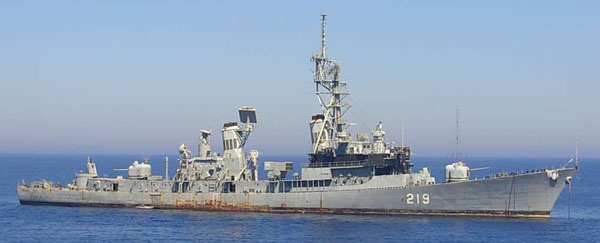
HS Nearchos, one of the three missiles destroyers of the Hellenic Navy today, in services fir about a decade, scrapped in the 2000s
The end of the cold war saw the delivery of four ex-US Navy missile destroyers of the Charles F. Adams-class from 1991–1992, alongside second-hand Knox class frigates. They were however decommissioned after ten years of service, using large crews, with high maintenance, and having obsolete electronics. Greece ordered also new Type 214 submarines using for the first time an air-independent propulsion (AIP) system, giving them an unprecedented range only accessible to SSNs.
Its naval air group was also extended and modernized wit the acquisition of a fleet of new Sikorsky S-70B-6/10 “Aegean Hawk” helicopters. But its most unusual acquisition post-cold war, unthinkable before, was the delivery of Zubr-class hovercraft from Russia and Ukraine. The Standard-class frigates were completely upgraded with new electronics and radar systems and the Glaukos and Poseidon-class submarines with new sonars and electronics, and were drydocked to receive also an air-independent propulsion engines (Neptun I/II program), also giving them unprecedented range. Quite an argument to deter and spy along the Turkish coast and in the aegean sea.

Frigate Hydra (F 452), Meko 200 Mk.3

HS Psara (F-454), a Meko 200 frigate
-Four Charles F Adams class missile DDs in 1991-92
-Four MEKO 200 Mk3 Frigates (Launched 1991-95)
-Three more Kortenaer class Frigates in 1993-94
-Three Knox class Frigates from 1992*
-Four Niki class corvettes: Ex-German Thetis class (1960), transferred 1991-92 with ASW TTs modified to fire the Mk48 acoustic ASW torpedoes.
-Two S41 class FACs from the bundesmarine (Iltis, Storch), transferred 1992
-Two P100 large patrol crafts (Pryopolitis, Polemistis)**.
-2 Osprey 55 class FAC (1990)
-4 Thetis class corvettes (ex-Bdmarine) (1991)
-2 ex-German S41 FAC (1992)
-2 P100 class FPC (1993)
*Leased from July and August 1992, pennants F456, 457, 458, and named Ipiros, Thraki and Makedonia, all ancient provinces of Greece. They were formally commissioned on 30 April 1993; They were not yard-condition (as 1960 ships) but have been drydocked and modified, fitted with spray strakes and new bow bulwarks for seakeeping and had modified ASROC launchers to fire the Harpoon SSM. They carried each an AB212 helicopter. All three only served for ten years, decommissioned in 1999, 2001 and 2003.
**Modified versions of the Osprey 55 FAC design (see in the FAC section) in 1992, planned for Harpoon missiles but restrained to guns only. 555 tonnes, 56.5 x 10 x 2.5m, 2 shafts MTU 24 kts, 2200 nm. Arled with a 76mm/61 OTO compact, 2x 40 mm Bofors, 2x 20mm Rheinmetall, mines. Fitted with a navigation radar Decca, triton, Selenia RTN-10X. In addition to the crew of 36 they carried 25 spec ops, operated from onboard inflatables.
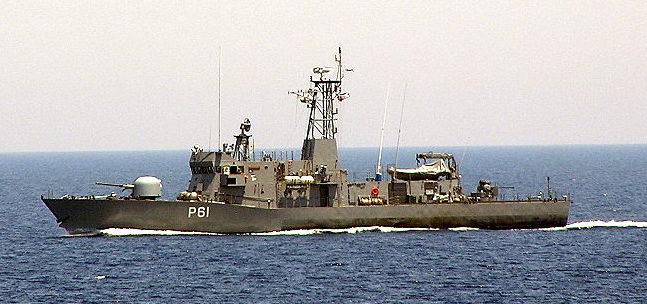
P61 Polemistis (ex-P21), a modified Osprey 55 design built in Greece at the Hellenic shipyards Skaramanga, in 1993.
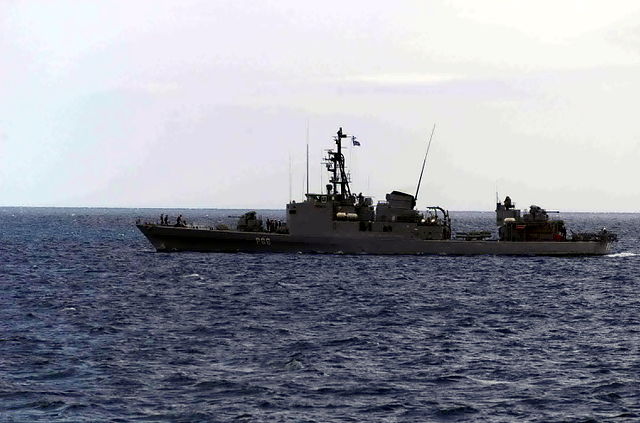
HS Agon, Niki class corvettes
2000s acquisitions
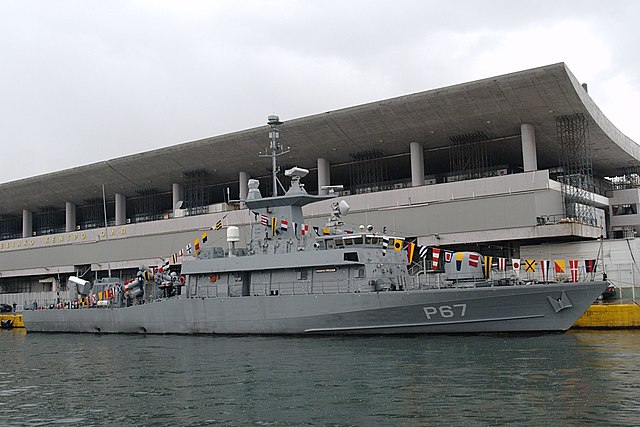
Roussen class FACs: Built 2005-2020 at Eleusis shipyards. Aklso called Super-Vita, these FACs comprises the HS Roussen, Daniolos, Krystallidis, Grigoropoulos, Ritsos, Karathanasis, and Vlahakos. These nearly 700 tonnes vessels propelled by MTU 16V595 TE90 diesel engines which procures them 23,500 hp for 35 knots are armed with the usual compact Oto Melara 76 mm/62 but also eight MM40 Block 2/3 exocet SSMs and a Mk31 21-cell RAM Block 1 SAM plus two Oto Melara 30mm cannons, so they are almost Frigates in reduction, and certainly ones of the most powerful Fast Attack Crafts in the world.
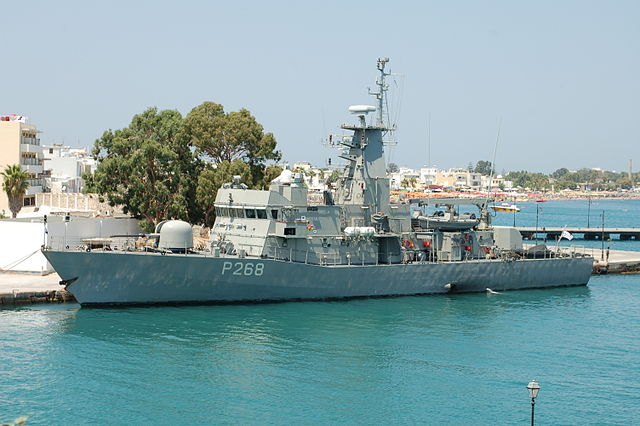
HS Aittitos (P-268) of the Machitis class (2003)
The Machitis class are large patrol vessels (LPV) built on the Osprey HSY-56A design at the Hellenic shipyards, Skaramanga in 2003-2004. The class comprised the HS Machitis, Nikiphoros, Aittitos and Krataios. They are 575 tons FL ships, 56 x 10 x 3.6 m propelled by two Wärtsilä Nohab 16V25 diesels for 10,000 hp, 22–23 knots, armed like the Osprey 55 but with in addition FIM-92 Stinger portable personal missile launchers and a modernized electronics suite comprising a Thales Variant two-dimensional (2D) MSMR surveillance radar, Mirador electro-optical target tracker, a Scout MkII LPI navigation radar, a Sperry Marine Bridgemaster-E navigation radar, a Raymarine RL80C MARPA secondary navigation radar, a Thales LIROD Mk2 fire control tracking system, ICMS Tacticos, Aeromaritime IFF Mk12, ICS 2000 integrated communications system, DR 3000 ESM system and MK36 SRBOC decoy launcher.
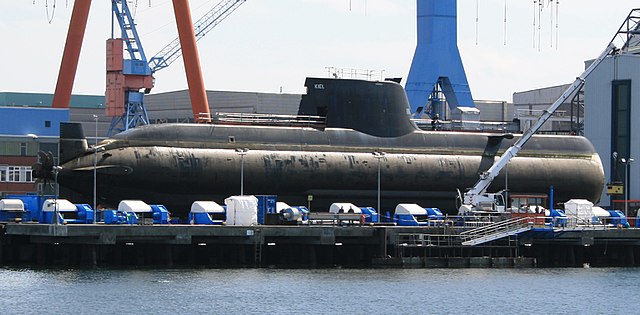
The Type 214 Mark 3 built for the first in Germany (Howaldtswerke-Deutsche Werft) and the rest in Greece, at the Hellenic Shipyards Co. It is currently an advanced closed-loop system perfect for roaming the shallow waters of the Aegean sea. They are all in service since the 2000s and the class comprised the Papanikolis (Comp. 2010), Pipinos (2015), Matrozos (June 2016) and Katsonis (June 2016). The current Okeanos upgrade includes AIP capabilities very similar to Type 214, and it is planned for the earlier 209/1500 AIP models. They are nominally still of the type 209 but much closer to the Type 214.
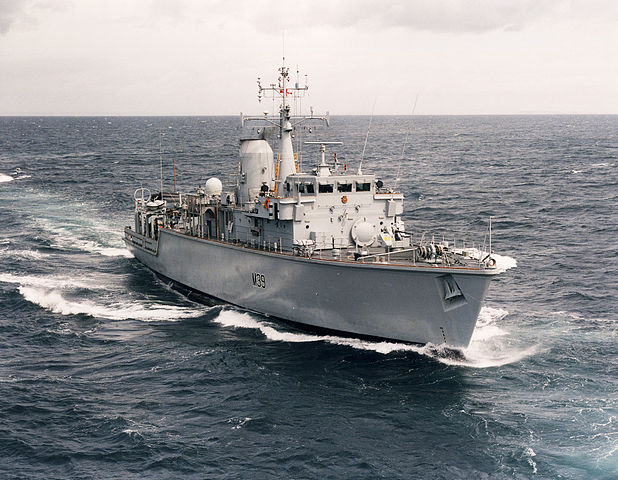
Minesweepers: The Hellenic Navy operates the Evropi class (ex-Hunt class vessels, Evropi, Callisto (1986) transferred in 2000-2001.) and the Evniki class (Eviniki, Kalysto) of 1994-1995, sold to the HN in 2007.
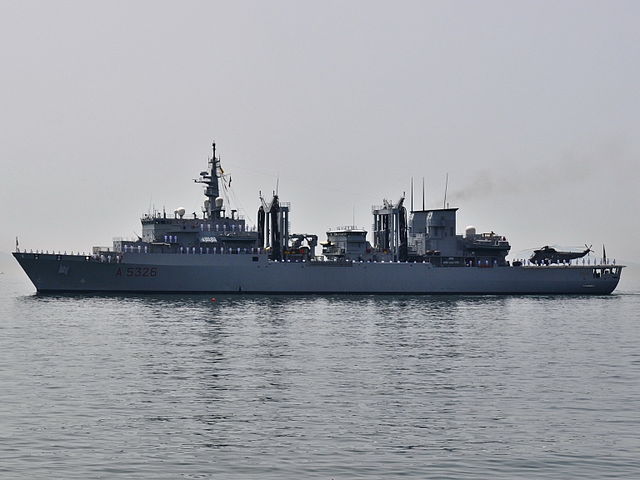
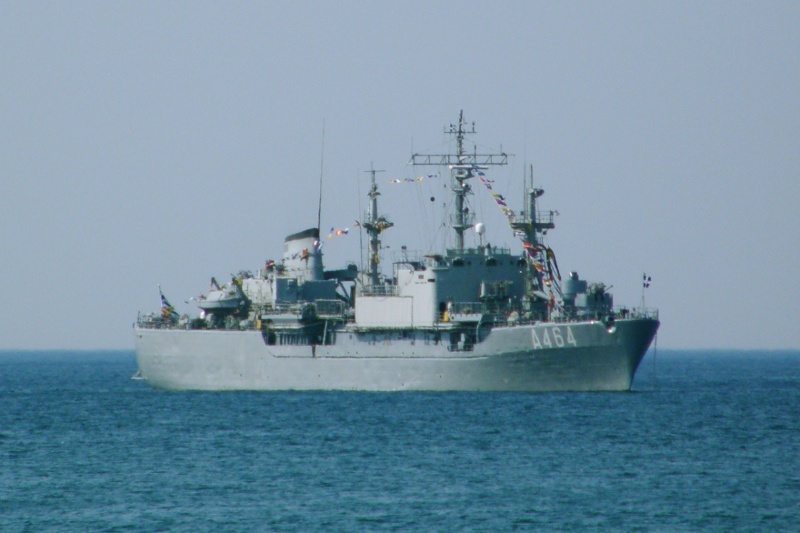
Hellenic support ships:
-HS Prometheus (top) (same as Italian Etna, 13,500 replenishment oiler), acquired in 2003
-HS Axios (bottom) of the Axios class (Axios, Aliakmon) support ships built by Blohm and Voss in 1969 on the 701C class (Lüneburg) model, commissioned to the Hellenic navy in 1991.
-HS Atlas and Herakles of the DP2 Support ship type donated in 2019-2020.
The fleet also operated the oil tankers HS Zeus, Ouranos, Hyperion and Orion and the water tankers Kalliroe, Trichonis, Doirani, Kerkini, Prespa, Stymphalia from Olida shipyards. The fleet also operates the Personnel ships Pandora and Pandrosos built in Perama Shipyard.
-The Hellenic Navy also operates the HS Arachthos, Evrotas, Nestos 430/430A class torpedo retrievers, the Oceanographic & Scientific Research Nautilus, Pytheas, Strabon and Akatos and the lighthouse tenders Karavogiannos and Lykoudis.
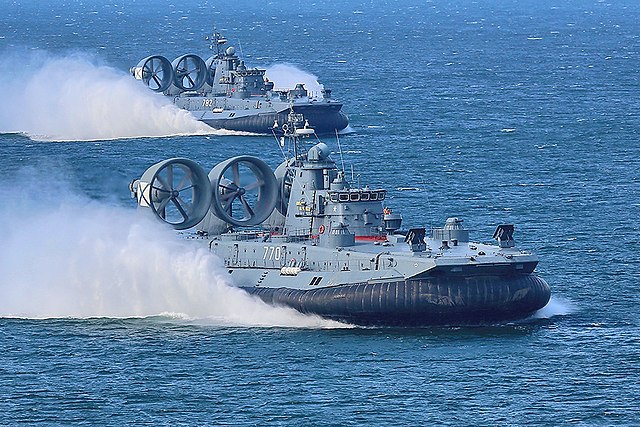
HS Cephalonia class: (Cephalonia, Ithaca, Kerkyra, Zakynthos) Assault Hovercrafts of the Zubr class, one purchased and modernized from Russia, and the remnants built in Ukraine and Russia in 2005-2009.
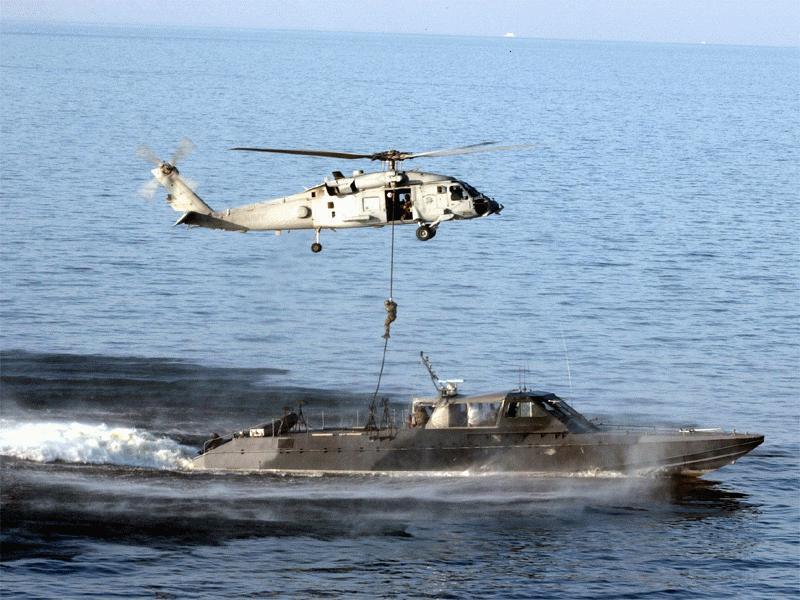
Greek special operative also operates an undisclosed numbers of Mark V Special Operations Craft acquired in 2020.
Next Generation (2020-2040)
Turkey as of 2018 was started to rearm fast. The country now has a domestic naval industry capable of building an assault carrier (LHD), and had a plan for three Destroyer/Frigates/Corvettes ships classes in the near future. What Greece is about to make about it ?
As of today, the Hellenic Navy represents a staff of about 30,000 active personnel, 120 warships & auxiliary boats: The fleet counts no destroyer, but 13 frigates, 11 submarines, 19 missile boats, 10 “gunboats” (Large Patrol vessels), 9 tank-landing ships, 6 patrol boats, 4 SOC (Special Ops) ships, and 48 fleet support & other auxiliary ships. Its naval aviation comprised 27 aircraft, under the Navy Aviation Command: Four Lockheed MartinP-3B Orion (entering the fleet from 2016), 13+ Sikorsky S-70/B-6 Aegean Hawk (Seahawks), and about a dozen older Aérospatiale Alouette IIIs, and unknown number of Agusta Bell AB-212 ASWs.
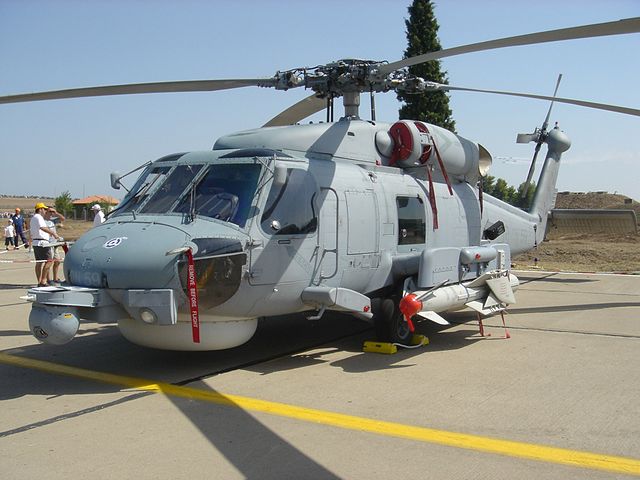
Hellenic Navy S-70B-6 Aegean Hawk
Currently, Greece is negotiated the acquisition of four new US Freedom class frigates as replacementfor older classes, assorted with a package of upgrades and future coproduction opportunities. The latter concerned the brand new Constellation class frigates recently approved over a Fincantieri design and developed for mass production. The seclecton process in still ongoung and was to end in 2021, after examination of French, German, British and Dutch proposals, which went through the selection process.
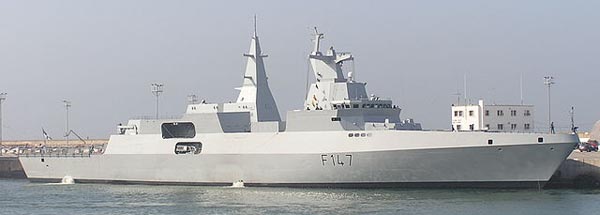
Meko 200 F147, German proposal for Greece
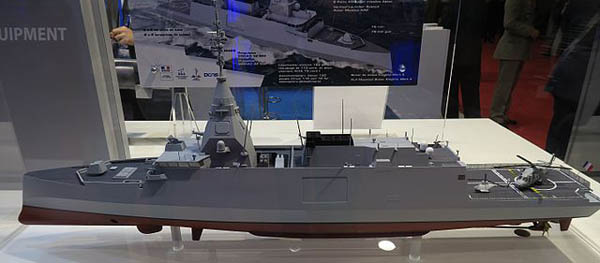
FTI class corvette by DCNS, French proposal to greece
Read More/Links
John Gardiner, Conway’s all the worlds fighting ships 1947-1995
//www.hellenicnavy.gr/en/fleet/frigates/frigates-type-standard/hs-themistoklis.html
//en.wikipedia.org/wiki/List_of_active_Hellenic_Navy_ships
//www.navypedia.org/ships/greece/gr_index.htm
//www.navsource.org/archives/05/01024.htm
//www.wrecksite.eu/wreck.aspx?186878
//hellasarmy.gr/hn_unit.php?id=D219
//www.ptisidiastima.com/uss-c-f-adams-to-be-scrapped/
//www.shipspotting.com/gallery/photo.php?lid=1401926
//www.navypedia.org/ships/greece/gr_index.htm
//www.academia.edu/42674731/Hellenic_Navy_structure_and_ships_2003_and_ships_2005_2015
//en.wikipedia.org/wiki/Hellenic_Navy
//www.seaforces.org/marint/Hellenic-Navy/Submarine/Glaukos-class.htm
//www.navalanalyses.com/2017/01/jason-class-landing-ships-of-hellenic.html
The 1960s fleet:
 circa 45 ships in 1965, 30 in 1990.
circa 45 ships in 1965, 30 in 1990.
Here are following the ships transferred to Greece from loaned vessels in 1943 to US transfer in the 1950s. The dates are in brackets and have nothing to do with the ship’s launching dates. All were of WW2 vintage and had a rather long service.
Cruiser Elli (1951)
Acquired in 1951, this was the 1935 Eugenio di Savoia. New pennant C94. She was left unmodified but a lattice mast installed, to support a British SO-8 radar and a few 20 mm AA Oerlikon guns. The large flagship basically absorbed all skilled technicians and specialists in Greece at the time, no longer available for the US destroyers that will came afterwards. Giving nothing of relevance in NATO defensive scheme for the region, it was decided to discard the cruiser in 1964. More on the Elli in navalanalyses.com
Niki class Destroyers (1951)
Niki, Doxa: These were two Gleaves class destroyers transferred in April and May 1951. They were refitted in 1962: Six 20 mm oerlikon guns removed, and quintuple 21-in TT bank. Tripod foremast installed to support a more modern radar.
Sfendoni class Destroyers (1959-81)
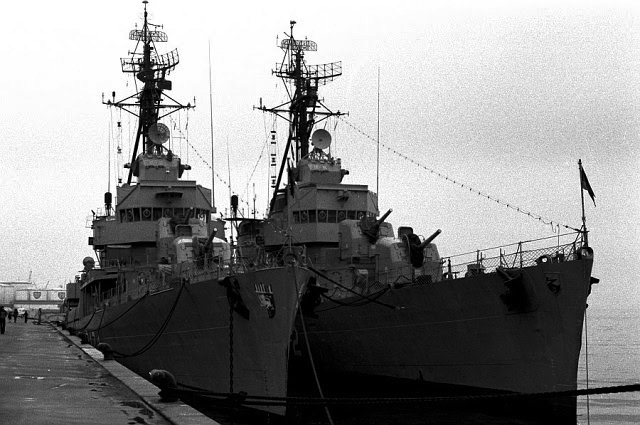
Nearchos and Kimon (DD-65, 42), ex German Z3, Z2 (1981).
This class of Fletcher class destroyers was transferred in three batches:
Sfendoni, Aspis, Lonchi, Velos in 1959; Navarinon, Thyella in 1962, Nearchos and kimon in 1980-81, ex German Z3, Z2 respectively. The transfer was performed under MDAP. They were lent to Greece, but the loans were renewed in March 1970 and purchase was made on 25 April 1977. At thet time, they were obsolete, despite an electronic modernization and new AA. The 1962 batch ships had their original five 5-in guns, two quadruple and a twin 40mm AA, no TTs while the others were refitted four 5-in and two triple 3-in AA guns and a single quintuple TT bank but also two triple 12.75 in ASW TTs. The ex-Bundesmarine Z1 of the Zestörer class was acquired in 1979 for spares, as well as Z4 in 1981 and Z5 in 1982. So basically the whole class was transferred to Greece. For the Z class specs, see the german Zestörer class. The latter were much more modern and in pristine conditions, which explains the gap between discarding the 1962 batch in 1981, 1990-93 for the others (Kimon was the last). The ex-German ships had 21-in TTs. The lead ship Sfendoni was used as a stationary training ship in the 1980s, Nearchos was versed in 1981 to the logistics command.
Kriti class Frigates (1943)
Kriti, Aegeon, Themistocles, Adrias, Hastings, Kanaris, Miaoulis, Pindos
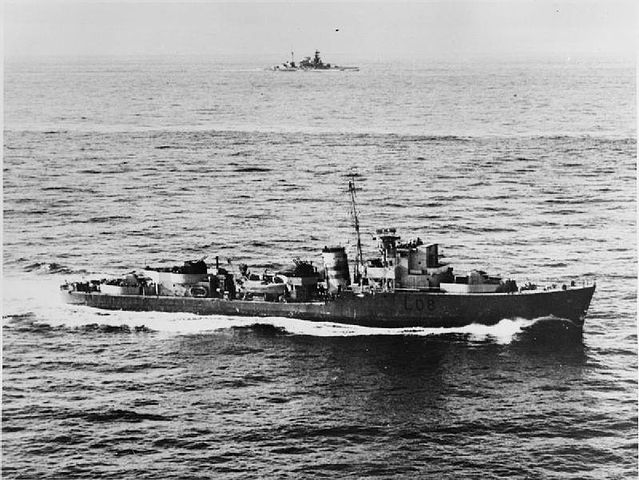
Hunt type escort destroyers rerated as ASW Frigates, initially launched 1941-42 and lent in 1943-44, of the Hunt class type 2 and 3. Adrias and Hastings were lent from 1946. They all discarded in 1959 and BU in 1960.
Kriezis class Frigates (1943)
Kriezis, Apostolis, Sakhtouris, Tompazis
Standard Flower class corvettes, lent in 1943. A fifth ship was sold later, St Mikoudis was sold later but ended in civilian service as a lighthouse tender. All but Apostolis were discarded in 1951-52 and the latter in 1961, BU 1952-63.
Aetos class Frigates (1951)
Aetos, Hierax, Leon, Panthir
Ex-US Cannon class destroyer escorts, reclassified as ASW Frigates in Greek service, which was very long for wartime emergency program vessels: They were retired in 1991. Modernization details are not known. Their sole triple 21-in TT bank was removed, while two smaller 324 mm (12.75 in) triple ASW banks were fitted instead, firing Mk24 ASW acoustic torpedoes. Retirement had been planned in 1980 but budgetary problems forced their maintenance for ten more years.
Amfitriti/Argoauvtafis class submarines (1943)
Amfitriti, Xifias (U), Argonauvtafis, Delfin, Pipinos, Trainia (V)
U and V class British submarines from ww2 lent from 1945. The U class were discarded in 1952, mothballed and sunk as targets in 1957. The V class lent earlier in 1943, 1944 and 1946, discarded in 1957-58, BU 1958-59.
Afromessa class minesweepers (1947)
Ex-British BYMS transferred 1945-47. The class comprised the Afromessa, Simi, Ithaki, Zakynthos, Kalymnos, Aura, Karteria, Andromeda, Kefallinia, Kleio, Kerkyra, Lambadias, Lefkas, Pigassos, Leros, Prokyon, Papalos, Thalia, Patmos, Ariadne, Paxi, Vegas, Salaminia. They were discarded 1966 to 1975.
Andros class minesweepers (1947)
Ex-British MMS class minesweepers, comprised the Andros, Mikonos, Argyrokastron, Syros, Chimara, telepeni, Kortytsa, Tinos. They were all discarded in the 1960s.
Patrol Crafts (1947)
Doliana class (Fairmile B type): Called Doliana, Karpenissi, Drama, Kassos, Elefteron, Kastelorizon, Halki, Ks, Kalambaka, Nissiros, Karpathos, Tilos
Bizani class (HDML type): called Bizani, Karia, Davlia, Kasrtaki, Distraton, Klissoura, Farsala, Portaria. They were all discarded in the early 1960s.
Kanaris class Destroyers (1951)

HS Kanaris (D-212)
Class: Kanaris, Kontouriotis, Sachtouris, Themistocles, Toumbazis, Aporstolis, Kreizis.
The Gearing class destroyers originally built in 1944-46 were modernized before transfer to the FRAM I standard, except Themistocles, which had the FRAM II standard radar picket conversion. Transferred first in 1971 she received a modernization in 1976-77, fitted with a aft flight deck operating an Alouette III ASW helicopter in place of the radar picket facilities. In 1980 she received two twin 30 mm superfast cannons in place of her 20 mm Oerlikon guns, and in 1987 received upgraded helicopter facilities, as for Miaoulis. The other ships were transferred in 1972 (Kanaris), 1973 (Kontouriotis, Sachtouris) and 1977 for Tombazis, and a remaining two in 1980-81. Apostolis was initially planned to be used for cannibalisation. They were all upgraded in 1987-88 with a 76 mm OTO-Melara gun, helicopter deck aft, and the 1970s batch received two twin canisters for Harpoon SSNs. The 1980 batch received a single 40 mm Bofors fwd of the bridge. Two more Gearing, the unnamed DD 817 and 880 ex Cory and Dyess were acquired for spares.
In addition, the Hellenic navy acquired the ex-USS Ingraham of the Allen M Sumner class in July 1971, renamed D 211 Miaoulis. She had received a FRAM II modernization and had an Aerospatiale Alouette III helicopter hoperating from her DASH platform. She was taken in hands in 1986 at the Eleusis shipyard for modernization, with a larger platform, and telecopic hangar for a AB-212 helicopter. These destroyers were retired when the new four Charles F. Adams class arrived, in 1992-94.
Frigate HS Aegeon (1976)

HS Aegeon, acquired in 1976, a Weser class frigate/Support ship hybrid. Built at Elsflether Werft yard, the was the Weser, transferred as Aegeon a Rhein class pecetime depot ship that could be upgraded as Frigate in wartime, with all the facilities needed. In Greek service she was used permanently as frigate, but also doubled as supply ships for FACs and MTBs. She was stricken in 1991.
Elli class Frigates (1981)
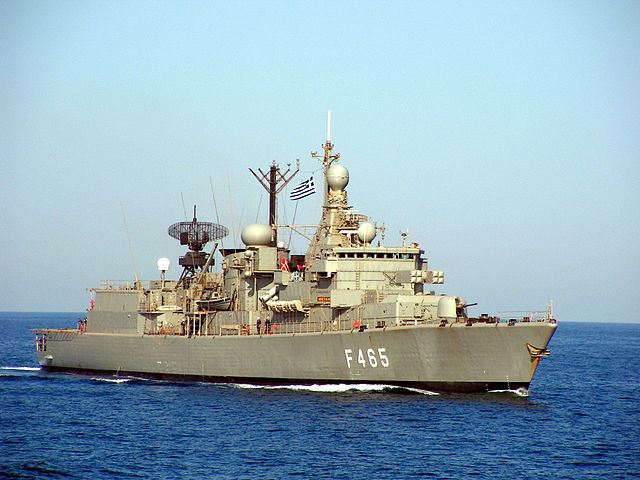
HS Themistocles, F-465. ex-Philips van Almonde (F823) in 2004.
Aigaion, Adrias, Bouboulina, Elli, Kanaris, Kountouriotis, Limnos, Navarinon, Nikiforos Fokas, Themistoklis
The acquisition of two Kortenaer (“Standard”) class Frigates was a move from the government for less dependency towards the USA. The whole class but two ships (sold to the UAE) were eventually sold to Greece, after their decommission. The first two were acquired in 1981-82, Elli and Limnos, followed in the 1993-95 by Aegeon, Adrias, Navarino, followed by the Bouboulina, Kanaris, Kountouriotis, Nikiforos Fokas and Themistoklis in the early 2000s. The only decommissioned so far has been Bouboulina (F-463), in 2013, all the others are in active service today. There were plans to built these ships at the Hellenic Shipyards, Skaramanga with Dutch assistance but the plan was curtailed becase of budget restrictions. They had lenghtened hangars to house the AB-212 helicopter, but were identical to the Dutch ships at any level. The oldest, Elli and Limnos were rearmed with Aspide SAM, two Phalanx CIWS and twice the number of harpoon missiles.
GATO/TENCH/BALAO class submarines (1958-73)
Five Modernized WW2 vintage Gatao, Tench and Balao class submarines were transferred to Greece.
-HS Amitriti, Poseidon: Streamlined Gato type, acquired 1957-58, loaned under MDAP, Poseidon purchased 1976 for spares. Stricken 1972-76
-HS Trainia: Modernized fleet snorkel Balao type, loaned from 26.2.1965, purchased april 1976, TS 1982, discarded since 1993.
-HS Papamikolis: Balao GUPPY IIa standard. Acquired 26.7.1972, purchased, used for training but ready for wartime, stricken 1993.
-HS Katsonis: Tench GUPPY II, acquired october 1973, purchased, used for training and discarded in 1993.
Glavkos class Submarines (1970)
Glavkos, Nereus, Triton, Poteus, poseidon, Amphitriti, Okeanos, Pontos
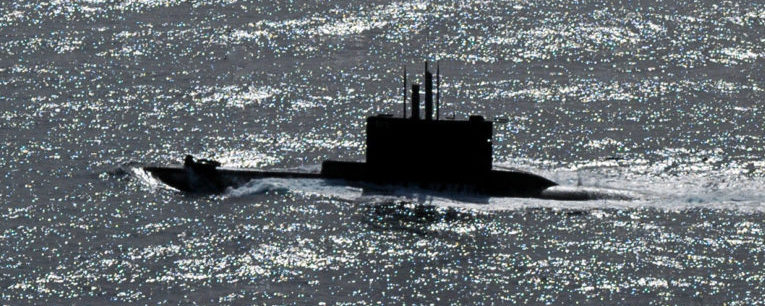
HS Proteus (S 113) off Sicily during a NATO Exercise
Greece was the first customer of the West German Type 209 submarines, later a great export success (if not the greatest) and largest submarine production outside the Bundesmarine. They were German-designed and packed many innovation for silent propulsion and long range underwater travel. They were able to dive at 200 m in normal operations (650 ft), with a crushing depht probably beyond 300 m, and had no less than eight bow torpedo tubes, impressive for 50 m long boats. They also had a reduced operatning cost due to great automation and a crew of only 31. They were all built in Germany, at Howaldtswerke Yard in Kiel, in two groups, the second being longer as the first serie was a bit cramped. This second serie in fact was the prototype for the mainstream export version, since sold to Portugal, Turkey and many other countries. Of this class, all are still operating to this day but the lead boat Glavkos, decommissioned in 2012. They all had been upgraded through an upgrade in 1989 to bring them up to the German 206A standard. Triton was refitted and Kiel and the three others in Salamis. They have now a sub-Harpoon capability, new sonar and electronics, but the crew was augmented to five so they are relatively cramped. The Glavkos class overhauled under the Neptune I program (1993-2000) and the next batch called the Poseidon class (1976-77) by the Neptune II upgrade program, cancelled but for Okeanos (S118). It is called the Type 209 1200 and 1200 AIP for Okeanos. Specifications were tailored and are specific to the Type 209-GC (Grieschen).
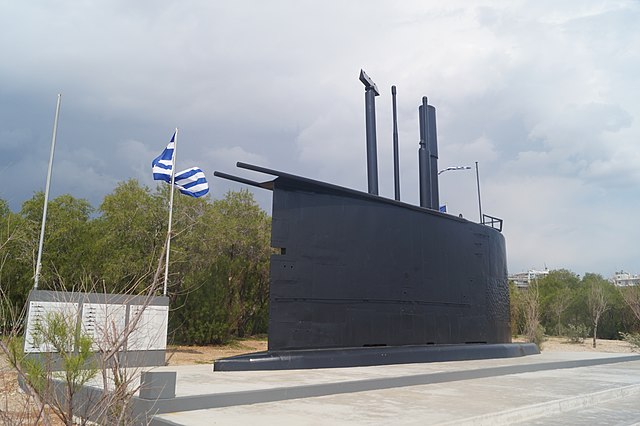
The preserved Kiosk of Okeanos, as a Memorial of Fallen Submarine Crew
Poseidon class specifications (1976)
Displacement: 1180/1300 (Glavkos: 1,105 tons st., 1,230 FL)
Dimensions: 55.9(54.4 m) x 6.2 x 5.5 (183 x 20 x 17ft)
Powerplant: 1 shaft, 4 MTU diesels + Siemens electric motor
Performances: Diesels/elect. 2250/3600 bhp, 11/12 kts, range 25/230/400 nm/20/8/4 kts
Armament: 8x 533 mm TTs (21 in), 14 torpedoes, sub-Harpoon SSM
Electronics: Unknown
Crew: 31
Chios (Jason) class Tanks Landing Ships (1988)
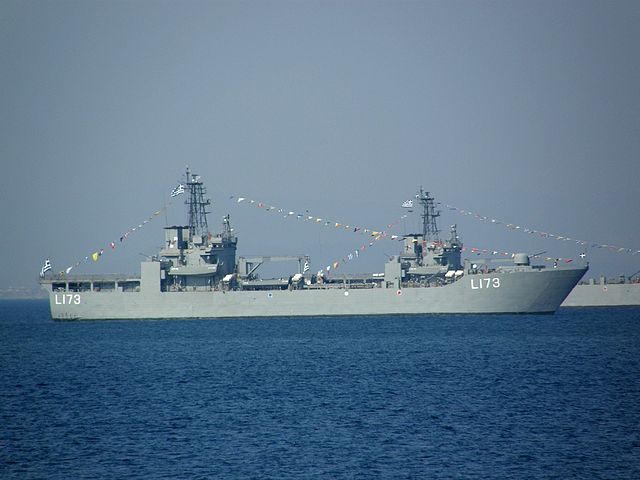
Chios class L-173 (commissioned in 1996) was followed by five ships, of which the last was cancelled, and the others were commissioned 1994, 1999 and 2000.
Chios, Samos, Ikaria, Lesbos, Rodos
Started at the end of the cold war, these TLS were entirely constructed in Greece, at the Eleusis shipyards. The wee ordered on 15 May 1986 as replacements for the obsolete WW2 LSTs and their appearance was close to the latter. The program was supposed to be wrapped up in 1990, but economical problems delayed completions. One ship was launched per year, 1988, 89, 90, 91, 92.
Jason class specifications (1976)
Displacement: 4400 tonnes FL
Dimensions: 115.9 x 15.3 x 3.44 (380 x 50 x 11ft)
Powerplant: 2 shafts diesels 10,600 bhp, 17 knots
Armament: 76mm/62 OTO Melara, 2x 40 mm Bofors, 2×2 20 mm AA, Sea king Helcopter*
Electronics: Radar Kelvin-Hugues Type 1007, Thomson-Sintra Triton V, Thomson-CSF castor
Crew: 108 + 303 infantry, 6 tanks or 10-12 light vehicles, 800 tonnes payload.
*Helipad aft but no facility
Ormi class LPV (1989)
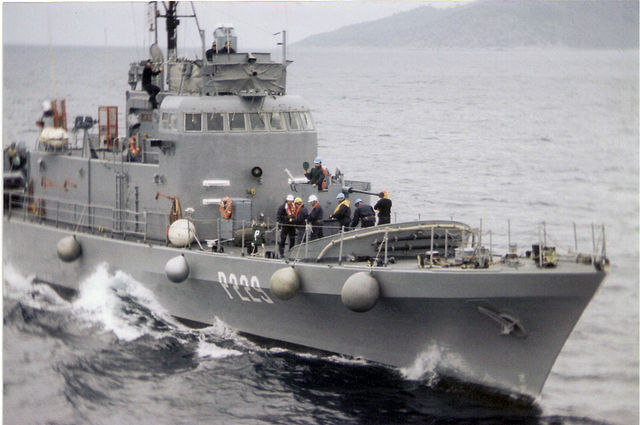
HS Tolm after transfer
These two ex-Asheville class large patrol vessels (LPV) were transferred in November 1989 and renamed Ormi and Tolm. Refitted and recommissioned in June 1990 without their gas turbines. Specs as the original Asheville class in reserve since 1977.
Greek MTBs (1967-76)
From 1965, Greece acquired 13 MTBs of various origins:
-6 Andromeda class: Ex-Tjeld class, Norwegian MTBs, ordered in Mandal, 1965: Adromeda, Iniohos, Kastor, kuykonos, Pigasos, Toxotis; The design was based on the Nasty class. They had two 40 mm Bofors and were delivered in 1967. They were discarded 1972-83. They were all based in the Aegean islands.
-Astrapi, Aiolos (P20 and P19), ex-German Brave and Ferocity class MTBs (Vosper design), strahl and Pfeil. Acquired 1967, discarded 1976-79.
-Delphin class (1968): A serie of five ex-Simbermöwe class MTBs, called Delphin, Drakon, Polikos, Polideflkis, Foinix, P15-P18. All discarded by 1974.
-Hesperos class (1976): Seven ex-German Jaguar class MTBs. Hesperos, Kataigis, Kantauros, Kylon, Laiaps, Scorpios, Tyfon. Three more were transferred in 1976-77 for spares. In 1980 they were renumbered P50-P56. kataigis was discarded in 1981, Kentauros in 1985 and the others in 1995-98. Note: This is contradicted by Wikipedia. More info
Greek FACs (1974-76)
16 FACs were acquired by Greece, ranging from 80 to 400 tonnes and varying widlly in capabilities.
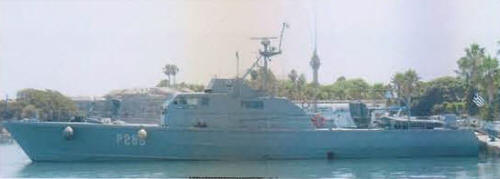
Diopos Antoniou in 2007 (src navypedia)
-Kelefstis Stamou class: Two French-built (CN de l’Esterel, Cannes, France) vessels for Cyprus, not accepted by the Cypriot government and instead re-routed to Greece at the time of the invasion. They had a wooden hull and their AA comprised a single 40 mm AA and one 20 mm or two 20 mm AA instead. But they packed quite a punch with their four SS 12 SSM, short range wire-guided missiles. They were equipped with a Decca 1226 radar. Names: Diopos Antoniou (P28 – 286) and Kelefstis Stamou (P29 -287)
![]()
Specs: 8/115 tonnes, 32 x 4.8 x 1.6m, 2 shafts MTU 12V331 TC81 diesels 2700shp/30 kts range 1500nm/15kts, crew 17. P287-288 in 1980, in service until the late 1990s.

Anninos class FACs (conways)
-Anninos class: Four French-Built La Combattante II Type FACs from CM Normandie (Cherbourg) delivered in 1971-72 as completed, ordered in 1969. Identical to the Israeli Saar types. An order for six more to be built in Greece was dropped in favor of an order for ten La Combattante III models. They were renamed in 1973, Kymothoi (Ipopliarchos Konidis, P53) P16, Kalypso or Ipopliarchos Batsis (P54) P17, Evniki (then Ipopliarchos Arliotis, P55) P15, Navsithoi (then Ipopliarchos Anninos, P56), initially P14.
Specs: 234/255 tones FL, 47×7.1×2.5m, 4 shafts MTU MD872 diesels, 12,000 shp, 36.5 kts, range 8500 nm/25kts. They were armed with four MM38 Exocet, two twin 35 mm guns and two 533 mm TTs. They were fitted with a Decca 1226, Thomson Pollux and Triton radars and the DR-2000S ECM suite. Discarded 2002-2004.
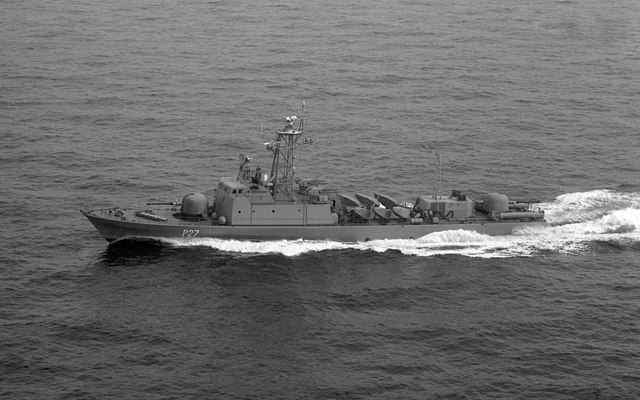
Simaioforos Xenos in 1988
-Laskos class: Ten La Combattante III type FACs from CMN Cherbourg. Built in two groups, four ships (Laskos, Blessas, Troupakis, Mykonios P20-23) and six ships (Kalavoudis, Kostakos, Deyiannis, Xenos, Simiztopoulos, Starakis, P24-29). They reached 430 tonnes for the second group, fully loaded.
Specs: 359/425-430 t FL, 56.2×7.9×2.5m, 4 shafts MTU diesels 18,000 bhp 36.5 kts, range 700/2000 nm 32/15 kts. They were armed with four MM38 or six Penguin SSM, two 76 mm OTO and two twin 30 mm, two 533 mm TTs. Their were fitted with a Decca 1226, Triton, and Castor radars, two Panda e/o systems, a DR-2000S ECM suite, and two Mk 36 SRBOC decoy RL, omitted in the second group. They were also partly armoured, with 2.5 in (64 mm) of Kevlar over vital spaces.
Ordered in 1974, delivered 1976, and the six of the second group were built in Greece, at the Hellenic shipyards in Skaramanga under French supervision, completed in 1980-81. This batch had less expensive missiles an delectronics. Today this is known as the Simaioforos Simitzopoulos class (P20-P29). Apart Antipliarchos Kostakos sunk in a collision in 1996, they are all in service today, modernized in the 2010s: Simaioforos Starakis for example had in addition to its Penguin Mk 2 mod.3 SSMs two twin Harpoon SSM (4 RGM-84C) and a Scout Mk 2, LIROD Mk 2 radar, MSP-500 Mirador e/o system, two Alex decoy RL and a TACTICOS CCS.
-Armatolos class: These two FACs, HS Armatolos and Navhamos based on the Osprey 55 type licenced from Frederickshaven Vaerft from Denmark. Ordered in March, 1988 they were built in 1989 and delivered, commissioned in 1990. They were initially planned to carry four Harpoon SSM but because of budgetary constraints, delivered without. They served as patrol vessels.
Specs: 515 tonnes, 54.7×10.5×2.55m, 2 shafts MTU 1163 TB 93 diesels, 9870 bhp, 24.37 kts, 500 nm/22kts, armed with a 40mm Bofors, 2×20 mm Rheinmetall AA and mines, and they could carry 25 infantry to be operated from inflatables. There has been discussions to rearm them with SSMs from decomm. Gearing class DDs.
Mine warfare vessels of the Hellenic Navy (1953-70)
Three classes for a total of 14 minesweepers and two minelayers over the years, only the last class was active in the 2000s.
-Aktion class: US MMC type minesweepers transferred in 1953 under MDAP (sister ship HC Amvrakia). Former LSM1 type lading ships converted, armed with 4×2 40 mm AA and 6x 20 mm AA, carrying 130 mines handled by a pair od derricks fore and aft. Discarded in the late 1990s
-Atalami class: (Atalami, Antiopi, Faedra, Thalia, Niovi) Adjutant class coastal minesweepers, transferred under MDAP in 1969, still in service in the 1990s.
-Aedon class: (Aedon, Klio, Aigli, Alkyon, Avra, Dafni, Kichli, Kissa, Pleias). Ex Falcon class coastal minesweepers built by Petereson, with a large enclosed bridge and wooden hull. Still active in the 1990s.
The post-cold war fleet:
Kimon class Destroyers (1991)

HS Nearchos
Kimon, Nearchos, Formion, Themistocles
First Hellenic missile destroyers (not counting ASROC on previous classes). Four Charles M. Adams identical to the ships discarded in the US. The ex DDG-18 was renumbered DD-218 in Greek service, leased from 13 September 1991, the other three came from San Diego and were acquired in 1/10/1992 but recommissioned on 30 April 1994. They were the ex-USS Semmes, Waddell, Joseph Strauss and Berkeley. It is not sure that they were equipped with Harpoon missiles, possibly transferred later. They were in 1995 prospects to upgrade their electronics, with a new combat system, sonar and SAM but it was never realized. Instead, they were scrapped in the 2004-2005s, after a ten year service.
In addition Richard E. Byrd (DDG-23) was sold for parts (never recommissioned) and ended as target.
Hydra class Frigates (1991)
Hydra, Spetsai, Psara, Salamis
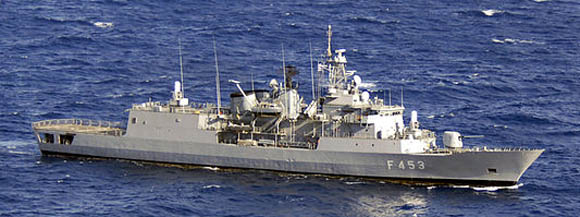
HS Spetsai (F-453)
The Hellenic order was one of the numeruous export success of the MEKO brand, a product from the Blohm and Voss Yards. It was a german portmanteau meaning “Mehrzweck-Kombination” for “multipurpose combination”. The company made already ships for Nigeria, Argentina, before launching the very successful 200 family. Before Greece, purchased by Turkey (1987, 4) and Portugal (1991, 3). Therefore the Greek version was called MEKO 200 Mark 3 as they were the third evolution of the type. The Greek MOD plan however was to acquire knowhow by building these vessels locally with German assistance. Aside the MEKO type, other designs has been considered and competed, like the Italian Lupo class or the British Leander class. The contract with B&V was announced on 18 April 1988. The contract stipulated the first ship was to be built in Germany and the remainder three in Greece at the Helenic SY, Skaramanga. They were tailored for the Hellenic needs, hence the specs table below. The ships were to be equipped by US Armament and electronics, including the Sikorsky Seahawk helicopter. HS Hydra was launched in December 1990, so barely a “cold war” vessel, although started before the fall of USSR. She was completed in 1992 but formally commissioned in April 1993, after repairs as a devastating fire broke out in january that year. The three remaining ships were plagues with difficulties and financial issues delayng the launching in 1992 and 1993, 94, completion in 1996 and 1998. Entire sections of the ships were shipped to greece for assembly and speed up the process. All four are in service today.

MEKO 200 Mk.3 overview (Conways)
Hydra class specifications
Displacement: 2710/3200 (updated: 3,360 tons st., 4,000 FL)
Dimensions: 109.5 pp/117.5 oa x 14.8 x 6 (385 x 48 x 19ft)
Powerplant: 2 shaft CODOG: 2 GE LM-5000-30 Gas Turbines, 2 MTU 20V956 TB82 diesels
Performances: Gas Turbines: 60.650 bhp, 31 kts, Diesels 10,400 bhp, 21 knots, range 4100 nm/18 kts
Armament: Mk48 VLS Sea Sparrow (16), 2×4 Harpoon SSM, 5-in/54 Mk45 gun, 2 Phalanx CIWS, 2×3 324 mm TTs, 1 Helicopter
Electronics: Radar Decca 2690BT, HSA MW-08, DA-08, STIR-18, sonar SQS-56, ECM Argo AR 700, APECS-II jammer, 2 decoy launchers
Crew: 173, including 22 officers
-Pezopoulos class FACs:
These were former 1974 Type 148 (La Combattante II A4L) craft of Bundesmarine, built in Lürssen, Vegesack and CMN Normandy, transferred in 1994-95 and 2000. Six ships of the Jaguar class. Armed with 2×2 MM38 Exocet MM38 SSM, 2x 76/62 OTO-Melara Compact, 1x 40/70 Breda-Bofors 564. Electronics: 3RM20, Triton-G, Castor-II radars, 2x Hot Dog, 1x Wolke decoy RL, PALIS CCS.

 Latest Facebook Entry -
Latest Facebook Entry -  X(Tweeter) Naval Encyclopedia's deck archive
X(Tweeter) Naval Encyclopedia's deck archive Instagram (@navalencyc)
Instagram (@navalencyc)





 French Navy
French Navy Royal Navy
Royal Navy Russian Navy
Russian Navy Armada Espanola
Armada Espanola Austrian Navy
Austrian Navy K.u.K. Kriegsmarine
K.u.K. Kriegsmarine Dansk Marine
Dansk Marine Nautiko Hellenon
Nautiko Hellenon Koninklije Marine 1870
Koninklije Marine 1870 Marinha do Brasil
Marinha do Brasil Osmanlı Donanması
Osmanlı Donanması Marina Do Peru
Marina Do Peru Marinha do Portugal
Marinha do Portugal Regia Marina 1870
Regia Marina 1870 Nihhon Kaigun 1870
Nihhon Kaigun 1870 Preußische Marine 1870
Preußische Marine 1870 Russkiy Flot 1870
Russkiy Flot 1870 Svenska marinen
Svenska marinen Søværnet
Søværnet Union Navy
Union Navy Confederate Navy
Confederate Navy Armada de Argentina
Armada de Argentina Imperial Chinese Navy
Imperial Chinese Navy Marinha do Portugal
Marinha do Portugal Mexico
Mexico Kaiserliche Marine
Kaiserliche Marine 1898 US Navy
1898 US Navy Sovietskiy Flot
Sovietskiy Flot Royal Canadian Navy
Royal Canadian Navy Royal Australian Navy
Royal Australian Navy RNZN Fleet
RNZN Fleet Chinese Navy 1937
Chinese Navy 1937 Kriegsmarine
Kriegsmarine Chilean Navy
Chilean Navy Danish Navy
Danish Navy Finnish Navy
Finnish Navy Hellenic Navy
Hellenic Navy Polish Navy
Polish Navy Romanian Navy
Romanian Navy Turkish Navy
Turkish Navy Royal Yugoslav Navy
Royal Yugoslav Navy Royal Thai Navy
Royal Thai Navy Minor Navies
Minor Navies Albania
Albania Austria
Austria Belgium
Belgium Columbia
Columbia Costa Rica
Costa Rica Cuba
Cuba Czechoslovakia
Czechoslovakia Dominican Republic
Dominican Republic Haiti
Haiti Hungary
Hungary Honduras
Honduras Estonia
Estonia Iceland
Iceland Eire
Eire Equador
Equador Iran
Iran Iraq
Iraq Latvia
Latvia Liberia
Liberia Lithuania
Lithuania Mandchukuo
Mandchukuo Morocco
Morocco Nicaragua
Nicaragua Persia
Persia San Salvador
San Salvador Sarawak
Sarawak Uruguay
Uruguay Venezuela
Venezuela Zanzibar
Zanzibar Warsaw Pact Navies
Warsaw Pact Navies Bulgaria
Bulgaria Hungary
Hungary

 Bundesmarine
Bundesmarine Dutch Navy
Dutch Navy Hellenic Navy
Hellenic Navy Marina Militare
Marina Militare Yugoslav Navy
Yugoslav Navy Chinese Navy
Chinese Navy Indian Navy
Indian Navy Indonesian Navy
Indonesian Navy JMSDF
JMSDF North Korean Navy
North Korean Navy Pakistani Navy
Pakistani Navy Philippines Navy
Philippines Navy ROKN
ROKN Rep. of Singapore Navy
Rep. of Singapore Navy Taiwanese Navy
Taiwanese Navy IDF Navy
IDF Navy Saudi Navy
Saudi Navy Royal New Zealand Navy
Royal New Zealand Navy Egyptian Navy
Egyptian Navy South African Navy
South African Navy






























 Ukrainian Navy
Ukrainian Navy dbodesign
dbodesign